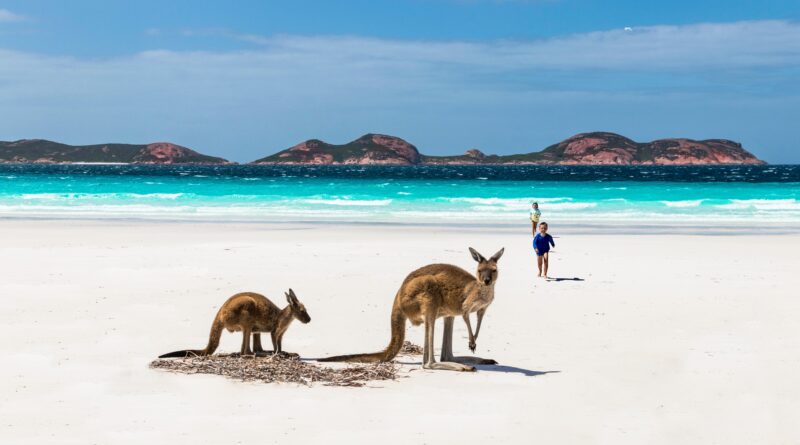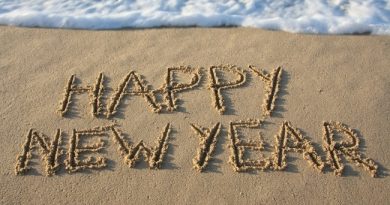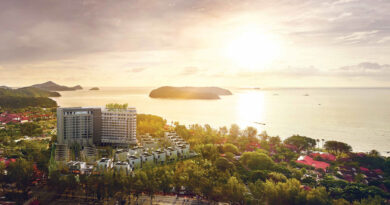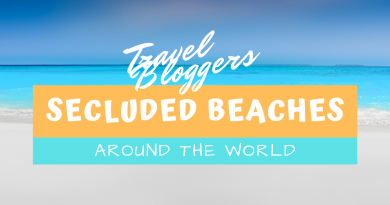AUSTRALIA’S BEST BEACHES
Australia is well known for its beaches. If you were to visit one a day, it would probably take close to 30 years to see them all! From the ever popular Bondi Beach to secluded wild beaches, whether it’s surfing, snorkeling, swimming, or sunbathing, there is a bound to be a perfect beach for everyone in each of Australia’s six states!
Discover our selection of popular and underrated beaches around every Australian state that truly deserves the title of Australia’s Best Beaches.
Contents
Western Australia – Wharton Beach

An hour’s drive away from Esperance, Wharton Beach in Western Australia promises blindingly white sand so fine that it squeaks when you walk on it. Pleasant for swimming and surrounded by pristine aquamarine waters, it is no wonder that many claim Wharton Beach to be THE most beautiful beach in Australia.
Continuous rolling waves and contrasting coastal scenery with its surrounding rocky headlands, Wharton Beach is truly paradise found.
Wharton Beach is located on the western side of Duke Of Orleans Bay Caravan Park. Amenities around the beach include public toilets and car parks. The car park above the eastern end of the beach provides an excellent view up the beach.

One of the other attractions, apart from the views, is that 4WDs are allowed directly on the beach. The beach is big enough that these vehicles do not obstruct your views and space.
It is also worth climbing the big rock to the south for the most amazing views of Wharton Beach and its coastline.
Queensland – Lady Musgrave Island

Most of Australia’s best beaches can be found in Queensland. With the Great Barrier Reef just off its coast, finding an idyllic island with pristine white sand beach and crystal clear waters is just a day-trip away!
Lady Musgrave Island is accessible from Bundaberg and the Town of 1770 and remains mostly untouched. Scenic shores, crystal clear waters, and close proximity to some of the best diving and snorkeling on Earth make it a popular destination for travelers and adventurers.
Set on 3000 acres of living reef, the protected lagoon stretches 8kms around the island. Soft white sand surround the entire island and the waters are invitingly warm and calm to swim in.
There are no hotels and resorts on Lady Musgrave Island. However, camping is allowed on the island to allow visitors to fully immerse themselves in this unspoilt paradise. However, camping is strictly prohibited from January to March. If you don’t fancy camping overnight, day tours to Lady Musgrave run throughout the year and is the perfect way to discover the island and its pristine beach for a few hours.

Weather on Lady Musgrave Island is mild year-round, with summer temperatures hovering around 21°C, and winter temps usually close to 18°C. If you visit Lady Musgrave Island during the Australian summer, be sure to consider whale watching tours as a part of your itinerary.
South Australia – Almonta Beach

There is more than 2000 kilometres of pristine and mostly deserted coastline just waiting to be discovered along the Eyre Peninsula, offering the quintessential Australian experience.
While the entire peninsula boasts impossibly blue waters and some of Australia’s best beaches, Almonta Beach – located inside the Coffin Bay National Park – is home to an array of native wildlife, including kangaroos, emus and goannas. It is also the perfect beach for swimming, fishing, exploring shallow rock pools or for simply taking in the views. The beach is relatively secluded and apparently has some of the whitest sand on the Eyre Peninsula.
The beach also provides expansive views to Golden Island from the lookout. This is a great spot to see the two swells – travelling in opposite directions – clash into each other.

If you are lucky, you might even spot a pod of dolphins swimming close by. During the low tide, a lagoon forms and rock pools surface. The clear waters are calm enough for swimming at Almonta Beach. There is also a public toilet available for use. The closest campground to this spectacular beach is at Yangie Bay.
After soaking in the sun and sea at Almonta Beach, head over to the working oyster farm where you’ll be served freshly plucked Pacific Oysters with Coffin Bay Oyster Farm and Tasting Tours.
Victoria – Refuge Cove

Refuge Cove in the state of Victoria is absolutely worth the effort to get to despite it all. Located within Wilson’s Promontory National Park – a 3-hour drive from Melbourne, Refuge Cove gets its name from the protection it offers passing boats and is indeed a safe haven and a beach haven!
Because of its secluded location, Refuge Cove is not very accessible to the masses. It is mainly untouched and will greet its visitors with two sandy beaches, crystal clear sparkling water, fascinating wildlife and tranquility. It’s certainly easy to see why many choose to just soak in the sun, sea and sand all day here. The waters, although not warm, is a refreshing welcome after a long day hiking or sunbathing.
There aren’t any roads leading into this pristine little bay. Refuge Cove is only accessible by boat or trail through the national park. For visitors who are traveling on foot, Refuge Cove is approximately a 17km hike from the parking lot at Telegraph Saddle, with many opting to break the trip up by camping at Sealers Cove. There is also a campsite right on Refuge Cove at the southern end of the beach. Spending a night or two here means that you can wake to the sound of waves and birds chirping in the trees around you. Unfortunately for most, there is a rule that limits camping to a maximum of only two nights in a row.

Advance booking is required for hikers and recreational boat users who intend to camp at Refuge Cove. Untreated creek water is also available and it is advisable to treat the water before consuming. There are also toilets available for visitors at the camping area.
For those who want a quicker way to get to Refuge Cove without hiking, you can opt for a day tour with Wildlife Coast Cruises.
New South Wales – Murrays Beach Jervis Bay

Murrays Beach is also known as the hidden jewel in the Booderee National Park. While not as famous as Jervis Bay’s Hyams Beaach, which boasts the Whitest Sand in the World, Murrays Beach is equally as stunning with pristine clear waters and its very own pearly white sand.
Perfect for families, Murrays Beach is situated in a protected bay which is sheltered by Bowen Island. The calm, clear waters at Murrays Beach are safe for kids to swim and play in. Snorkeling and swimming in the invitingly warm waters are also highly recommended as there are plenty of marine life to see underwater. There are also lots of shady areas to hide from the sun when it gets too hot.

Although it is still considered a secluded beach, Murrays Beach is easily accessible with a carpark situated just 300m away through a wide bush track.
Murrays Beach really is the quintessential essence of a perfect beach and as locals call it, one of Australia’s Best Beaches to date.
Tasmania – Wineglass Bay

Who doesn’t love a bay that’s named after a wineglass? Surrounded by wild, unspoiled beauty with a bush-fringed shoreline, stark-white sand, and sapphire waters, Wineglass Bay is a 1.7 km long stretch of pure, magical bliss.
Wineglass Bay is one of Tasmania’s most recognised beaches located within Freycinet National Park. It is also considered as one of Australia’s Best Beaches and the Top 10 Beaches in the World so you know you’re onto a good one!
One of the most beautiful ways to enjoy the beach is from a lookout above the bay. Set off on the 3km return hike from the Wineglass Bay car park to see the vibrant colours high from above. The sparkling sea changes from a green to a deep blue in a split second surrounded by the pink hues of the magnificent rock formations surrounding the bay and not forgetting the blindingly white sand beach.

Camping is allowed on Wineglass Bay. There’s a small campsite at the southern end of the bay but you will have to bring your own water. The main campsite in the national park is near Coles Bay. As the demand for camping spots is so high in summer, the park uses a ballot system to allocate spots between 18 December and 10 February and over the Easter period. The ballot is drawn in August, so you’ll need to apply in advance.
Wineglass Bay is roughly over a 2-hour drive from Hobart and Launceston and is relatively easy to reach. However, once there, you will have to hike 1.3kms on a loose gravel track from the carpark to the bay.
If walking is not your thing, why not hop onto a boat and sail right into Wineglass Bay? Wineglass Bay is safe for swimming but the water does get a little chilly at times so it is best to visit during the warmer months from December through April.

For a hassle-free travel experience to discover some, if not all of Australia’s Best Beaches, check out Sedunia Travel.
Sedunia Travel is an award-winning Aussie Tour Specialist with ready-to-go packages and can also customise your ideal Western Australia itinerary to suit your needs.




